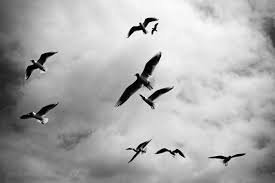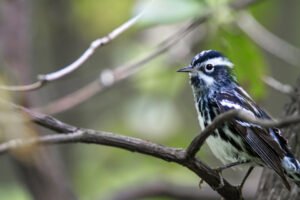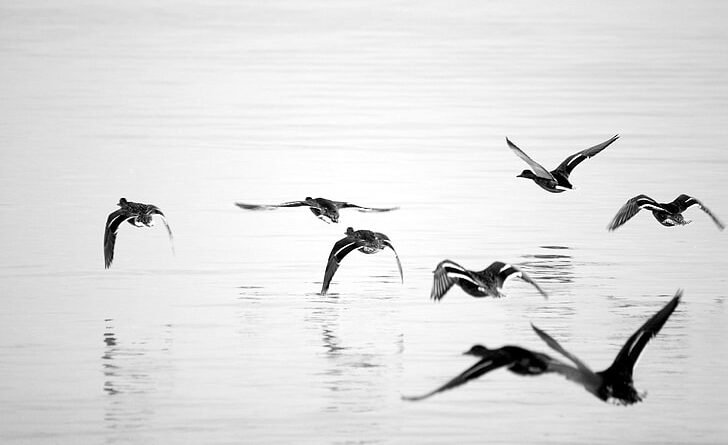The Enigmatic Charm of Black and White Birds
I. Introduction
A. Definition of black and white birds:
Black and white birds are avian species characterized by predominantly black and white plumage. While some may exhibit additional colors, the striking contrast between black and white is their defining feature.
B. Their prevalence across different habitats:
These birds can be found inhabiting a wide array of ecosystems, from dense forests and grasslands to polar regions and open oceans. Their adaptability allows them to thrive in diverse environments around the globe.
C. The allure and mystery surrounding them:
Black and white birds have long captured the fascination of humans due to their striking appearance and often enigmatic behaviors. Their presence in various cultural narratives and their role in ecological systems contribute to their mystique.
II. Evolutionary Significance
A. Camouflage and adaptation:
The black and white coloration of these birds serves as an effective form of camouflage in their respective habitats, helping them blend into their surroundings and evade predators or sneak up on prey. Additionally, their specialized adaptations, such as streamlined bodies for aerial hunting or webbed feet for aquatic life, further enhance their survival abilities.
B. Role in sexual selection:
In many species, the distinct black and white patterns play a crucial role in mate attraction and courtship rituals. Males often display intricate plumage patterns or perform elaborate dances and displays to woo potential mates, showcasing their genetic fitness and ability to provide for offspring.
C. Behavioral traits shaped by their distinct coloration:
The black and white coloration of these birds can also influence their behavior and social dynamics within their communities. From territorial displays to cooperative hunting strategies, their distinct appearance often plays a role in communication and interaction with conspecifics.
III. Diversity of Black and White Birds

A. Birds of prey: The majestic hunters
- Eagles: With their keen eyesight and powerful talons, eagles reign supreme as apex predators in many ecosystems.
- Hawks: Known for their agility and precision in hunting, hawks are masters of the skies.
- Falcons: Falcons exhibit astonishing speed and aerial prowess, making them formidable hunters of birds and small mammals.
B. Waterbirds: Masters of aquatic habitats
- Penguins: These iconic birds are perfectly adapted to life in the frigid waters of the Southern Hemisphere, relying on their sleek bodies and flipper-like wings for propulsion.
- Seabirds: From albatrosses to gulls, seabirds traverse vast oceanic expanses, utilizing their black and white plumage for efficient flight and foraging.
- Shorebirds: Shorebirds, such as avocets and oystercatchers, inhabit coastal regions, where their black and white markings provide camouflage against sandy or rocky shores.
C. Passerines: The songsters of diverse ecosystems
- Magpies: Known for their intelligence and vocal mimicry, magpies are ubiquitous in many urban and rural landscapes.
- Woodpeckers: With their distinctive drumming and probing behaviors, woodpeckers play crucial roles in forest ecosystems.
- Nuthatches: These agile climbers navigate tree trunks and branches with ease, foraging for insects and seeds amidst the foliage.
IV. Adaptations for Survival

A. Cryptic coloration and mimicry:
Many black and white birds exhibit cryptic coloration, allowing them to blend seamlessly into their surroundings and avoid detection by predators. Some species also engage in mimicry, imitating the calls or behaviors of other animals to deter potential threats.
B. Social behaviors and communication:
The distinct coloration of black and white birds often plays a role in social interactions within their communities, from establishing dominance hierarchies to coordinating group hunting or nesting activities. Vocalizations and visual displays further facilitate communication among individuals.
V. Cultural and Symbolic Significance
A. Mythology and folklore:
Black and white birds feature prominently in myths and legends across cultures, often symbolizing qualities such as wisdom, cunning, or spiritual significance. From the raven of Native American folklore to the magpie of European mythology, these birds hold a special place in human imagination.
B. Symbolism in different cultures:
In various cultures, black and white birds are associated with a wide range of symbolic meanings, from omens of death or misfortune to symbols of good luck or protection. Their presence in religious iconography and cultural rituals reflects the deep reverence and awe they inspire.
C. Representation in art and literature:
Throughout history, black and white birds have been depicted in art, literature, and folklore, serving as symbols of beauty, mystery, and transcendence. From ancient cave paintings to modern-day literature and film, their imagery continues to captivate and inspire.
VI. Conservation Concerns
A. Habitat loss and fragmentation:
Human activities such as deforestation, urbanization, and agricultural expansion have led to the loss and degradation of critical habitats for many black and white bird species, threatening their survival.
B. Climate change impacts:
Rising temperatures, changing precipitation patterns, and sea-level rise pose additional challenges for black and white birds, particularly those that depend on specific environmental conditions for breeding, foraging, or migration.
C. Conservation efforts and success stories:
Despite these challenges, conservation organizations and individuals around the world are working tirelessly to protect and restore habitats, mitigate climate change impacts, and raise awareness about the importance of preserving biodiversity.
VII. Conclusion
A. Recap of the importance and diversity of black and white birds:
From the majestic hunters of the skies to the masters of aquatic realms and the songsters of diverse ecosystems, black and white birds encompass a remarkable diversity of forms and functions, each contributing to the intricate web of life on Earth.
B. Reflection on the enduring fascination they hold in the natural world:
Through their timeless allure and mysterious charm, black and white birds remind us of the beauty and complexity of the natural world, inspiring wonder and awe in those who observe them.

